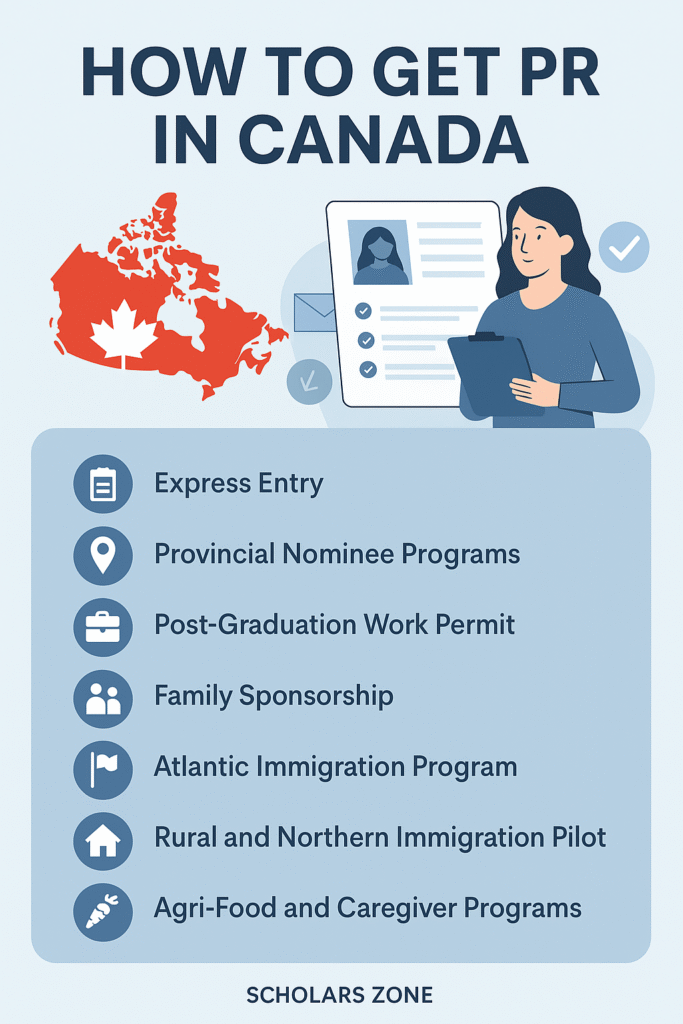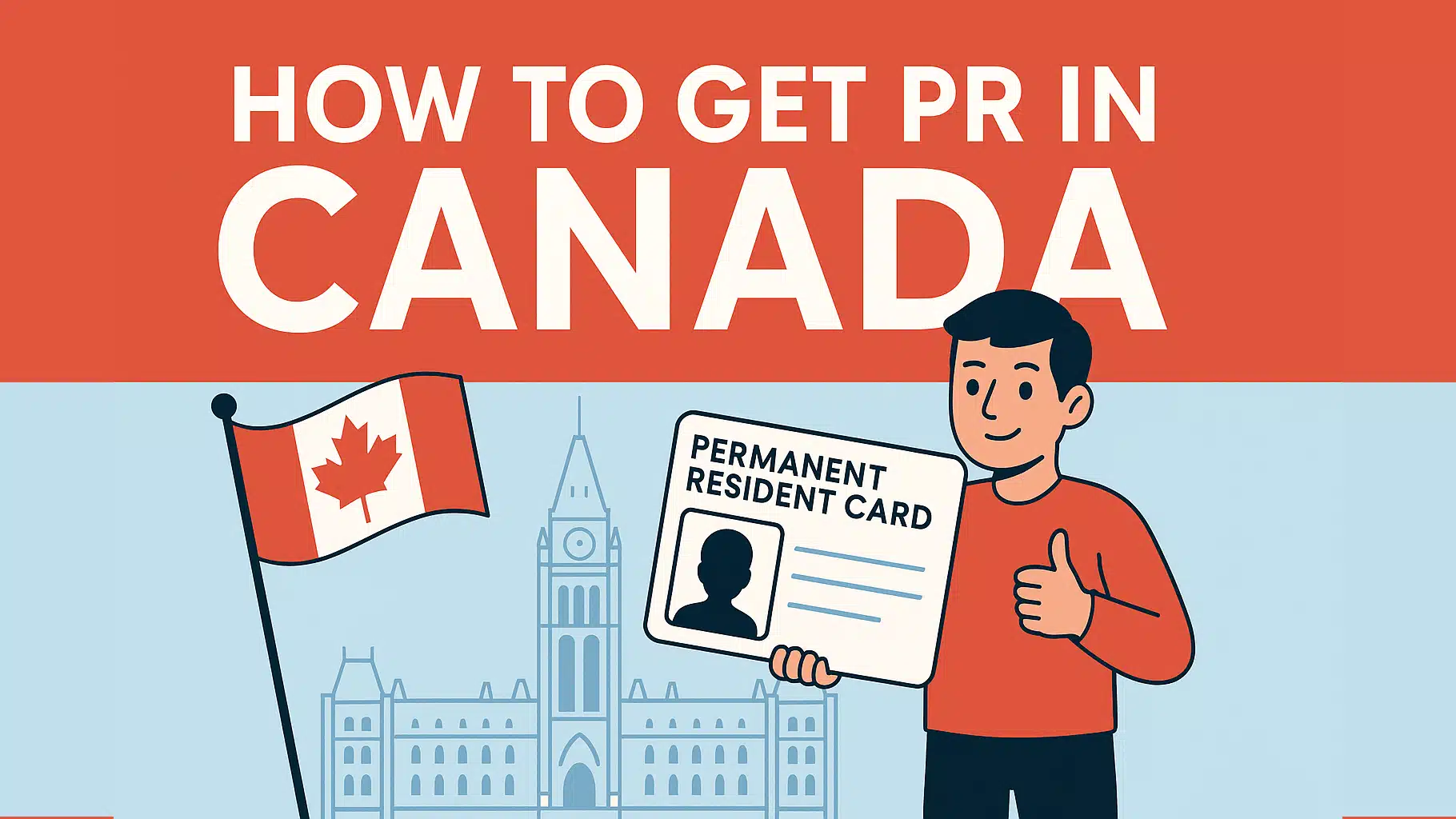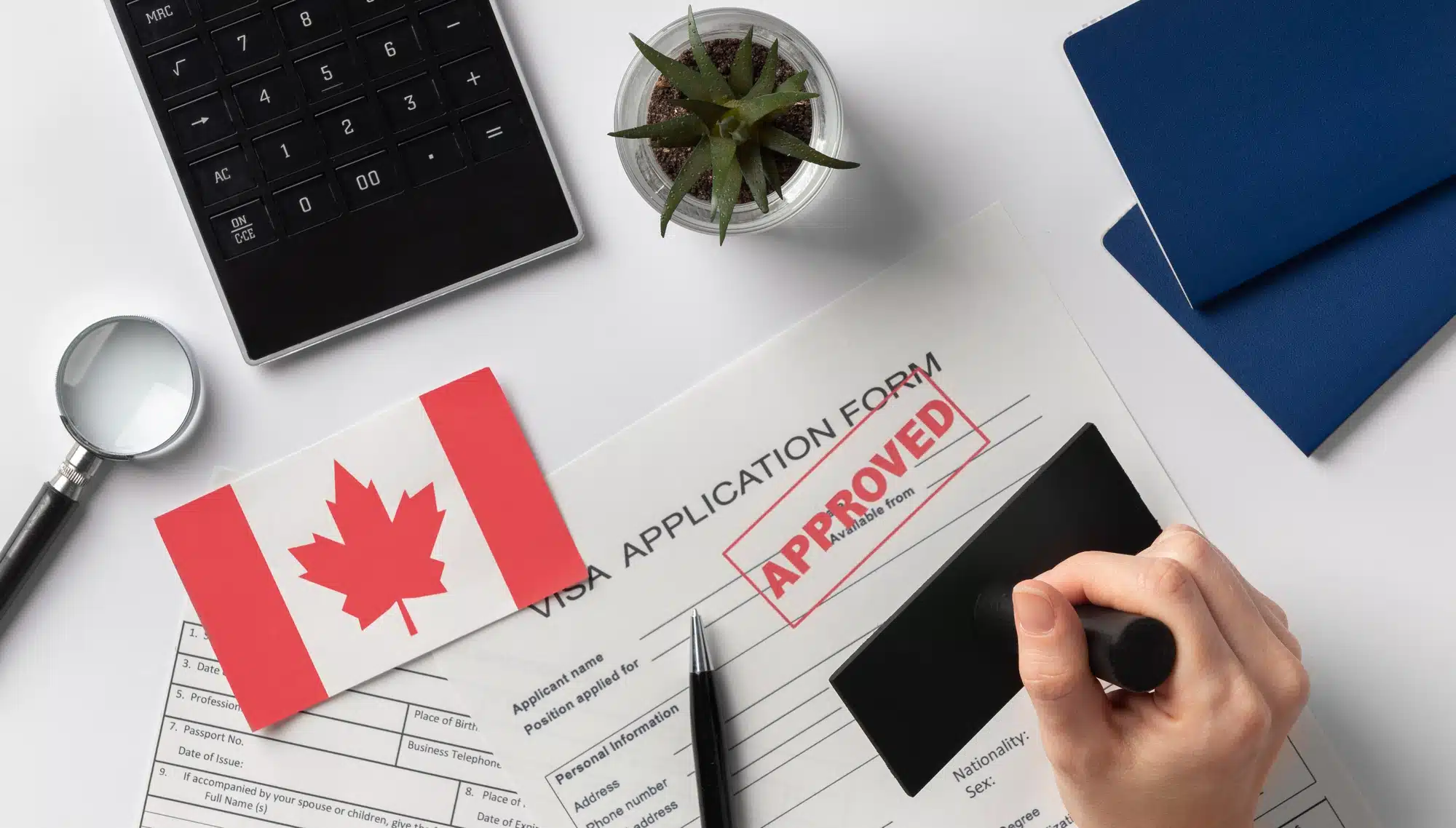
This complete guide will walk you through how to get PR in Canada using different immigration pathways, including Express Entry, Provincial Nominee Programs (PNPs), family sponsorship, and more. We’ll also discuss eligibility criteria, required documents, and application steps to help you start your journey toward permanent residency.
What Is Canadian PR (Permanent Residency)?
A Permanent Resident (PR) is someone who has been granted the right to live and work in Canada indefinitely, but is not a Canadian citizen. PR status offers access to many benefits, such as:
-
The ability to live and work anywhere in Canada
-
Access to healthcare and social benefits
-
The opportunity to sponsor eligible family members
-
A clear pathway to Canadian citizenship
Why Is PR Important?
Getting PR in Canada is often the first step toward building a future in the country. It provides stability, mobility, and the freedom to work and study without restrictions. After maintaining PR status for a certain number of years, individuals can apply for Canadian citizenship.
How to Get PR in Canada: Main Pathways
There are multiple immigration streams available depending on your education, work experience, language skills, and goals. Here are the most popular and effective ways to get PR in Canada in 2025:
1. Express Entry System
The Express Entry system is the fastest and most popular route for skilled workers.
Programs under Express Entry:
-
Federal Skilled Worker Program (FSWP)
-
Canadian Experience Class (CEC)
-
Federal Skilled Trades Program (FSTP)
Eligibility:
-
Language proficiency (IELTS or CELPIP)
-
Minimum 1 year of skilled work experience
-
Post-secondary education
-
Sufficient funds (if applying without a job offer)
Key Features:
-
Point-based ranking (CRS – Comprehensive Ranking System)
-
Draws held regularly for top-ranked applicants
-
PR in as little as 6 months if invited
Pro Tip: Improve your CRS score by gaining Canadian experience, increasing IELTS scores, or getting a provincial nomination.
2. Provincial Nominee Programs (PNPs)
Each Canadian province has its own PR stream based on local labor needs.
Examples of PNPs:
-
Ontario Immigrant Nominee Program (OINP)
-
British Columbia Provincial Nominee Program (BCPNP)
-
Saskatchewan Immigrant Nominee Program (SINP)
-
Manitoba PNP
-
Alberta Advantage Immigration Program (AAIP)
Eligibility:
-
Job offer or ties to the province
-
Work experience in demand
-
Express Entry profile (for many PNPs)
Advantage: A provincial nomination adds 600 points to your Express Entry profile, almost guaranteeing an Invitation to Apply (ITA).
3. Post-Graduation Work Permit (PGWP) + Canadian Experience Class (CEC)
If you studied in Canada, this is the ideal route.
Steps:
-
Study at a Designated Learning Institution (DLI)
-
Get a PGWP (up to 3 years)
-
Gain 1 year of skilled work experience in Canada
-
Apply through the CEC stream of Express Entry
Why It Works: Canadian experience boosts your CRS score and gives you a competitive advantage over overseas applicants.
4. Family Sponsorship
Canadian citizens and PR holders can sponsor their family members.
Eligible Sponsors Can Support:
-
Spouses or common-law partners
-
Dependent children
-
Parents and grandparents
Processing Time: 12–24 months depending on the relationship
Requirement: Proof of genuine relationship and financial stability (for parent/grandparent sponsorship)
5. Atlantic Immigration Program (AIP)
For applicants willing to settle in Atlantic Canada (Nova Scotia, New Brunswick, PEI, Newfoundland & Labrador).
Requirements:
-
Valid job offer from a designated employer
-
Language test results
-
Settlement plan
Why Consider AIP: Less competitive and lower CRS score requirements compared to Express Entry.
6. Rural and Northern Immigration Pilot (RNIP)
Aimed at bringing newcomers to smaller communities in Canada.
Steps:
-
Get a job in a participating community
-
Meet local program criteria
-
Apply for community recommendation
-
Submit PR application
Perk: Great option for those with lower CRS scores or without ties to major cities.
7. Agri-Food Immigration Pilot / Caregiver Programs / Startup Visa
These programs are ideal for:
-
Agricultural workers
-
Home child care providers or support workers
-
Entrepreneurs/startups with funding and innovation
Each has specific eligibility, job requirements, and language criteria.
Documents Needed for PR Application
Regardless of the stream, you’ll typically need:
-
Passport
-
Language test results (IELTS, CELPIP)
-
Educational Credential Assessment (ECA)
-
Work experience documents (reference letters, salary slips)
-
Police clearance certificate
-
Medical examination report
-
Proof of funds (bank statements, fixed deposits)
How Long Does It Take to Get PR in Canada?
| PR Pathway | Processing Time (Approx.) |
|---|---|
| Express Entry | 6–8 months |
| PNP via Express Entry | 8–12 months |
| PNP (Non-Express Entry) | 12–18 months |
| Family Sponsorship | 12–24 months |
| AIP or RNIP | 12–18 months |
| PGWP + CEC | 6–12 months |
How Much Does It Cost to Apply for PR?
| Item | Estimated Cost (CAD) |
|---|---|
| Language Test (IELTS) | 300 – 350 |
| ECA Report | 200 – 300 |
| PR Application Fee (per adult) | 1,365 |
| Medical Exam | 250 – 400 |
| Police Certificate | 0 – 100 |
| Biometrics | 85 |
| Settlement Funds (Proof of Funds) | 13,757 (1 person) |
Final Tips on How to Get PR in Canada
-
Prepare early: Build your profile and take language tests in advance.
-
Stay updated: Check IRCC news for program updates and draw scores.
-
Hire a consultant (optional): Especially helpful for PNPs or employer-driven programs.
-
Use CRS calculators: Evaluate your score before applying.
-
Be patient and organized: A well-prepared application increases approval chances.
Conclusion: Which Route is Best for You?
The best pathway to PR depends on your background:
-
Skilled workers abroad → Express Entry (FSWP)
-
Students in Canada → PGWP + CEC
-
Job in a rural area → RNIP or PNP
-
Family in Canada → Sponsorship
Knowing how to get PR in Canada is just the beginning. Taking the right steps, staying informed, and preparing a strong application will make your dream of Canadian residency a reality.
Need Expert Guidance?
At Scholars Zone, we help students and professionals navigate their PR journey to Canada—from study permits to Express Entry and beyond.
📌HEAD OFFICE: House – 27/A, Rd No. #03, Dhadmondi, Dhaka – 1205.
🌐 Website: www.scholarszone.com.bd
📞 Phone: +88 01714-076485
📧 Email: contact@scholarszone.com.bd








